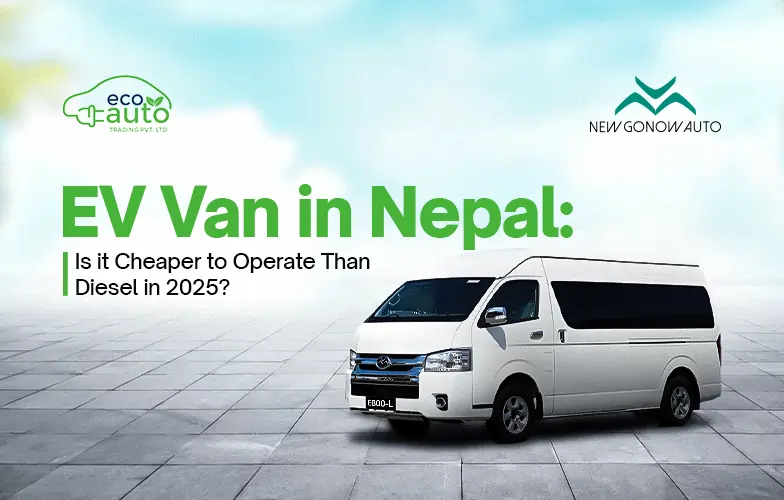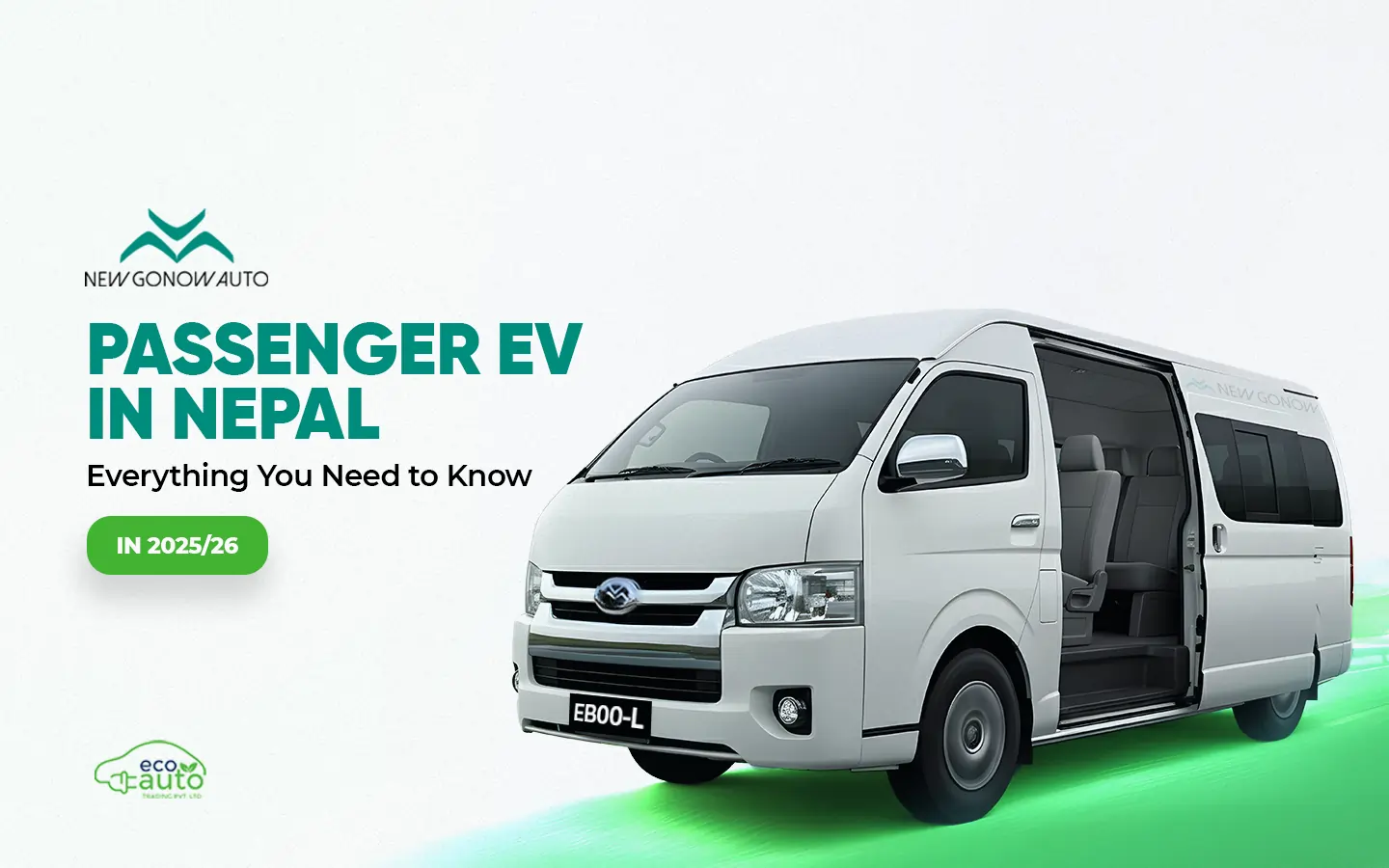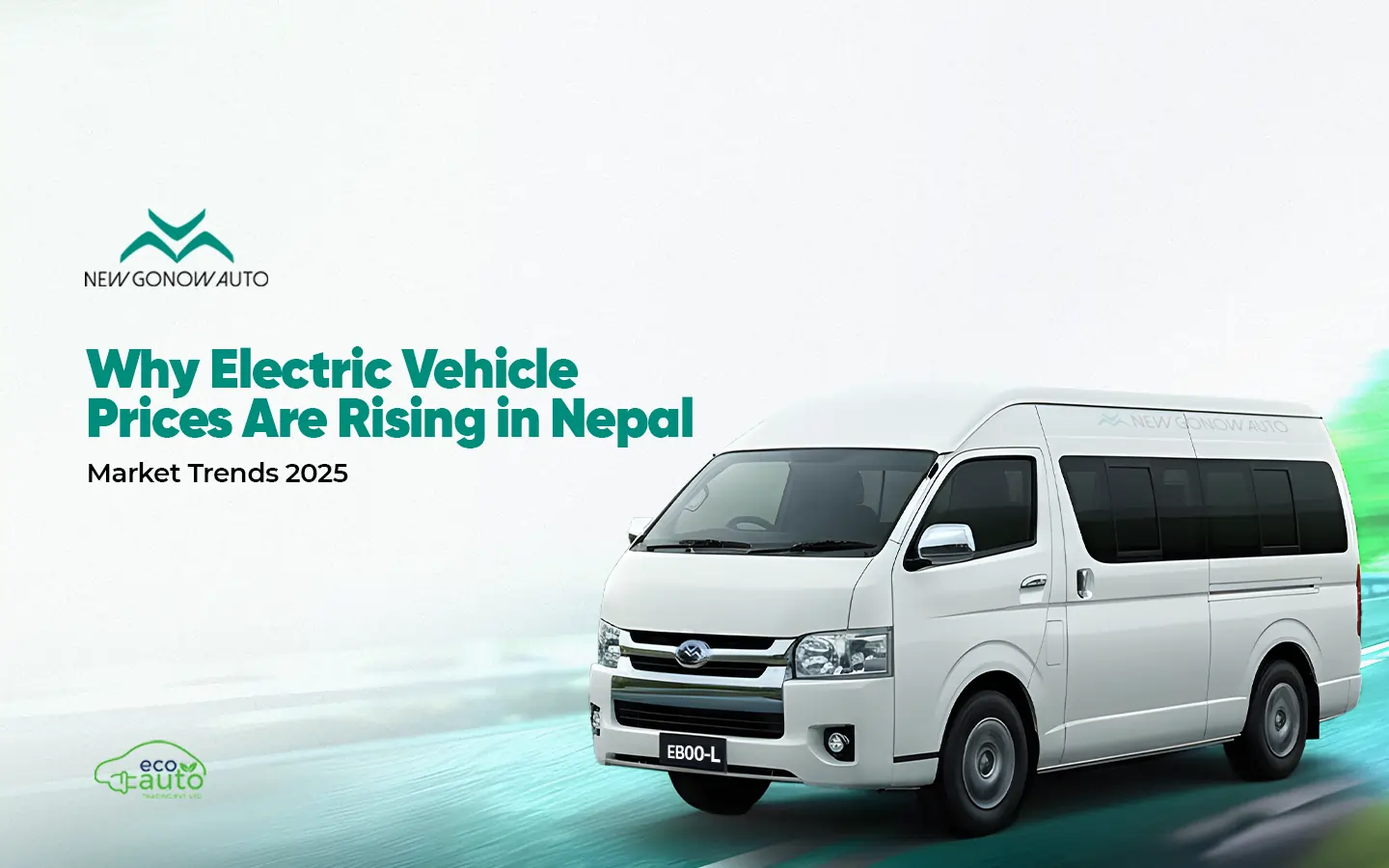
EV in Nepal: Is It Cheaper Than Diesel in 2025?
Why So Many Are Considering EV Vans in 2025
In 2025, many Nepali families, schools, and business owners are rethinking their vehicle choices. Diesel prices are rising, maintenance costs are increasing, and the government is now offering support for electric options.
This shift has made people search more frequently for answers like:
- Is an EV van really cheaper than a diesel van?
- What is the running cost of an EV van in Nepal?
- Is now a good time to switch?
This guide is designed to give you clear, trustworthy information to help you decide what’s right for your needs.
EV Vans in Nepal: The 2025 Situation
The electric vehicle (EV) market in Nepal has expanded quickly, especially for larger vehicles like vans. Once considered a niche option, EV vans in Nepal are now being used by schools, transport companies, and families alike.
Here’s what’s changed:
- More brands and models are now available
- Government incentives make EVs more affordable
- Charging stations are expanding beyond major cities
- Operating costs are much lower than diesel vehicles over time
However, it’s important to note: Costs and availability can vary by location, model, and usage needs.
Diesel vs EV Vans: Monthly Cost Comparison
This comparison is based on an average of 2,000 km driving per month:
| Cost Category | EV Van (Estimated) | Diesel Van (Estimated) |
| Charging/Fuel | NPR 4,000–5,000 | NPR 22,000–26,000 |
| Maintenance | NPR 1,500 | NPR 6,000–8,000 |
| Servicing Frequency | 1–2 times/year | 3–4 times/year |
| Tax/Registration | Reduced for EVs | Standard rates apply |
| Monthly Total | NPR 6,000–7,000 | NPR 30,000–35,000 |
Note: Costs may vary depending on usage, terrain, charging access, and the van model.
Understanding EV Running Costs in Nepal
Charging Cost
- EV vans consume about 15–20 units of electricity per 100 km.
- At NPR 10–12 per unit, that’s roughly NPR 600–800 for a full charge.
- A 2,000 km month might cost about NPR 4,000–5,000 in charging.
Tip: Installing a home or school-based charging point can make charging easier and more cost-efficient.
Maintenance
EVs have fewer moving parts no engine oil, no gear system, and fewer mechanical issues. Annual maintenance costs can be as low as NPR 15,000–20,000.
Diesel vans may require oil changes, filter replacements, and more frequent servicing costing up to NPR 70,000 per year.
Battery Cost
Most EV van batteries last 5 to 8 years. Replacing them can cost NPR 8 to 12 lakh, depending on model.
Tip: Check the battery warranty and whether your EV brand offers future replacement or buyback programs.
5-Year Cost of Ownership Comparison
Here’s a quick look at the estimated 5-year costs of owning an EV van versus a diesel van in Nepal:
| Category | EV Van (Approx.) | Diesel Van (Approx.) |
| Charging/Fuel | NPR 3–3.5 lakh | NPR 13–14 lakh |
| Maintenance | NPR 1 lakh | NPR 3–3.5 lakh |
| Battery (optional) | NPR 0–10 lakh | — |
| Total Cost (5 Years) | NPR 4–5.5 lakh (or up to 10L with battery) | NPR 17 lakh+ |
Tip: Many users recover the higher upfront cost of an EV within 2 years through lower monthly expenses.
How the Government Supports EV Buyers in 2025
EV owners benefit from several government policies aimed at encouraging cleaner transportation.
Benefits You Should Know:
- Lower customs duty and excise tax
- Reduced VAT on electric vehicles
- EV loans with flexible EMI options (offered by some banks)
- Priority in vehicle registration and green plate numbers
Tip: Always check the most updated rates and policies with your local dealer or transport office, as these can change year to year.
Is Nepal’s EV Charging Infrastructure Enough for Your Van?
The good news is that EV charging infrastructure in Nepal is steadily improving in 2025. Today, you can find over 200 charging stations strategically located along major highways and in key cities, making longer trips much more feasible than before.
Many schools and offices have also started installing private charging stations, allowing users to charge conveniently during off-hours.
If you’re considering an electric van for your daily routes or business, setting up a home charger is a popular option. The setup typically costs around NPR 1 to 1.5 lakh, which can save you time and hassle in the long run.
Tip: For longer journeys or off-road routes, it’s smart to plan your stops around available charging stations. Some EV users even carry portable chargers as a backup, which can be a lifesaver during emergencies.
Who Should Consider an EV Van?
If you fall into any of these categories, an EV van might be worth considering:
Schools and Colleges
- Lower running costs
- Reduced air and noise pollution
- Easier to manage for short, daily trips
Delivery & Transport Businesses
- High mileage means quicker return on investment
- Less downtime due to fewer repairs
- Fits well with fixed-route logistics
Families
- Useful for large families or shared travel
- Quiet and safe driving experience
- Suitable for both urban and nearby rural roads
Key Things to Keep in Mind Before Buying
Before making a decision, ask yourself:
- How many kilometers do I drive per month?
- Do I have access to regular charging (home, school, public)?
- Can I afford a slightly higher upfront cost?
- Is there service support available in my area?
- What warranty does the EV van offer especially on battery?
Tip: Speak with current EV users in your network or community groups. Real feedback helps more than marketing brochures.
Pros and Cons of EV Vans in Nepal
Advantages:
- Lower monthly operating costs
- Government-backed incentives
- Quiet and emission-free
- Fewer mechanical issues
Limitations:
- Higher purchase price
- Charging still not available everywhere
- Battery replacement can be expensive
Still, for many people who drive frequently, the long-term financial and environmental benefits are becoming hard to ignore.
Final Thoughts: Is an EV Van Cheaper Than Diesel?
For many schools, businesses, and even families, yes EV vans are proving cheaper to operate in Nepal, especially over the long term.
Lower fuel and maintenance costs can add up to major savings within just a couple of years. Add in tax benefits and cleaner air, and the switch starts to make practical sense.
But it’s not a one-size-fits-all solution. Consider your route, usage, and access to charging before making the decision.
Next Steps: What You Can Do Now
Here are some simple steps to guide your next move:
- Review your current fuel and maintenance expenses
- Compare EV van models and their warranties
- Visit a local EV station or talk to EV users
- Calculate your 5-year cost of ownership
- Explore loan and subsidy options with banks or government offices
Tip: Don’t rush to buy spend time learning. A well-informed switch to EV can save you more than just fuel money.
FAQs About EV Vans in Nepal
1. Which is cheaper to operate in Nepal: diesel vans or electric vans?
Electric vans generally cost less to operate than diesel vans, especially over time. With rising diesel prices and lower electric van running costs, EV vans save money on fuel, maintenance, and taxes. Upfront costs are higher, but savings appear within 2-3 years for regular users.
2. What is the expected driving range of EV vans in Nepal in 2025?
Most EV vans in Nepal in 2025 offer about 250 to 300 kilometers per full charge. This range suits city driving, school runs, and short trips. For longer trips, planning charging stops is important due to limited charging stations outside main cities.
3. Is buying an EV van worth it in Nepal right now?
Yes, EV vans are worth considering for those who drive regularly and want to reduce running costs. Government subsidies and growing charging infrastructure make ownership more affordable. Still, consider your daily distance, charging access, and budget before switching.
4. How long does it take to fully charge an EV van in Nepal?
A full charge with a home charger usually takes 6-8 hours, suitable for overnight charging. Fast chargers can charge up to 80% in 1-2 hours, good for quick stops during the day.
5. Can EV vans handle Nepal’s terrain and weather?
Yes, many EV vans are built for Nepal’s diverse terrain and weather. Models with good suspension and ground clearance are available, but extreme off-road use may need careful model choice.
6. Are there government incentives for buying EV vans in Nepal in 2025?
Yes, Nepal offers incentives like lower customs duties, reduced VAT, and tax exemptions on EVs. These help lower the purchase price. Check the latest policies before buying.




